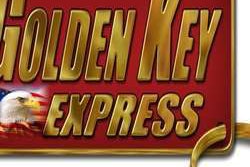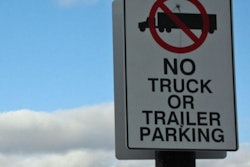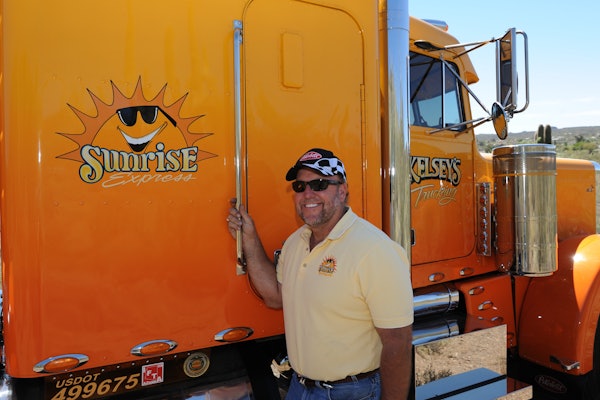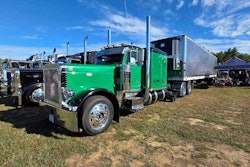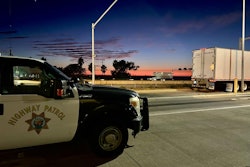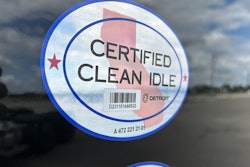Even though the price at the pump is lower in Missouri, the cost apart from taxes is higher. You or your carrier pay taxes to each state in proportion to miles driven; the potential savings come by paying the lowest price for fuel alone.
Fuel-saving tips are repeated over and over, but fuel-buying strategies don’t get the attention they deserve. Smart buying seems simple: Just check the prices. But states’ fuel taxes hide real, or “ex-tax,” fuel prices. So buying at the true low-price cost gets tricky – and truly confounding in states that regularly change fuel taxes and, in a few cases, tack on a per-gallon surcharge.
The key step in finding the real fuel price is to subtract state fuel taxes from the pump price. “That tells you how much you’re paying for fuel,” says Ed Forman, CEO of Prophesy Transportation Solutions in Bloomfield, Conn. “You can’t control taxes, but you can control fuel costs.”
The International Fuel Tax Association ensures that each state gets fuel tax money based on each truck’s fuel mileage and miles driven in the state. To get fuel mileage, IFTA divides reported gallons of fuel purchased into reported miles driven. To figure fuel taxes, IFTA divides the mileage into the number of miles run in each state and multiplies the result by the state’s fuel tax.

For example, Pennsylvania’s fuel tax is 38.1 cents a gallon. After running 100 miles there at five miles a gallon, the truck pays Pennsylvania’s tax on 20 gallons: $7.62. Across the Delaware River, New Jersey’s fuel tax is 17.5 cents a gallon, so 100 miles there costs the same truck $3.50. Virginia’s fuel tax is only 16 cents, but with a 3.5-cent surcharge per gallon, so 100 miles there costs the same truck $3.90.
IFTA evens out taxes paid at the pump if the fuel is burned in other states. This means that if you buy fuel strictly by pump price, you might buy too much fuel in states with low taxes. Then, at the quarterly accounting, you’ll owe money to high-tax states. “They get penalized for not buying enough fuel in the states they traveled the most in,” says Bob Weaver, CEO of United Fuel Tax.
Gail Whitson of United Fuel Tax Services in Knoxville, Tenn., gives the example of a client who bought Georgia fuel and drove 1,455 miles in Florida. “Because Florida has one of the highest prices for diesel, he didn’t buy there,” she says.
This was in the last quarter of 2006, when Florida’s fuel tax was 29.97 cents a gallon. Georgia was charging only 15.2 cents.
“He bought 302 more gallons than he needed in Georgia,” Whitson says. “He should have bought 269 gallons in Florida.” To get that figure, she divides his fuel mileage, 5.4 miles per gallon, into 1,455 miles.
Because he bought too much fuel – and paid too much in fuel taxes – in Georgia, based on miles run there, the International Fuel Tax Association computes the difference.
“He has a $45.90 credit in Georgia,” Whitson says. “But since he didn’t purchase any fuel in Florida, where he did all his driving, he owes them $80.02.”
IFTA will subtract the owner-operator’s $45.90 Georgia credit from the $80.02 he owes Florida and charge him the difference, $34.12, for driving 1,455 miles in Florida.
To avoid that quarterly surprise, Weaver says, “Buy fuel in each state to account for all the miles you’ve driven in it. Then you’ll have a zero tax bill at the end of the quarter.”
This is all much simpler, of course, if an owner-operator is leased to a carrier that doesn’t pass along any charges for fuel taxes. In that case, “it’s to the owner-operator’s advantage to fuel at the lowest possible pump price, regardless of what state he’s in,” says Charles Campbell of fuel-management company North American Technology.
“This approach favors the low fuel tax states such as Georgia, Kentucky and Missouri,” says Campbell, who wrote the “Fuel Purchase Management Handbook.”
Some carriers collect and pay fuel taxes, some don’t, and some do it for a fee. Other carriers pay by averaging their fleets’ total mileage in each state, which means individual owner-operators might pay too much for their low-mileage states. In that case, get clarification and, if necessary, find other ways to pay taxes.
Differing fuel prices and taxes allow owner-operators to cut their fuel costs through strategic purchasing, but they need complete, current information to do so. “The states can change their tax rates every quarter,” Whitson says. “Most of the time they raise it a little bit. We have to keep up with those rates.”
Applying the information can be confusing, too.
“It can be very difficult to figure out,” says owner-operator Bruce Hogy of Morristown, Minn. “But once the light bulb comes on, you say, ‘Oh, now I get it.'”
To cut his fuel costs, Hogy customized a fuel program in Microsoft Excel and keeps it updated with mileage and fuel purchases by state. “The reason I do all this is because I have my own authority,” he says. “I don’t have a company doing it for me.”
Campbell agrees. “Owner-operators with their own authority have to pay attention to the price of fuel, not the looks of the waitress or the taste of the pie,” he says.
All this number crunching might seem more trouble than it’s worth, but the potential savings are significant.
“A tractor operating 110,000 miles a year and getting 5.5 miles a gallon uses 20,000 gallons of diesel,” Campbell says. “Each 1-cent savings in the cost of a gallon of fuel represents a $200 savings per year.”
“I figure my strategies probably save me from $1,500 to $2,000 a year,” says owner-operator Trent Jones of Atlanta, who’s run under his own authority for seven years. “The main thing is planning.”
Jones actively checks prices while on the road. “I get on the CB and ask what the price of fuel is there, or if anybody’s bought it here, and what it costs.”
Hogy, who’s run under his own authority for 12 years, says his fuel bill last year was $56,000, and he ran 115,000 miles.
“It’s not like your savings will be in the four and five digits, but if you save 2 percent, it’s $1,000 a year,” he says.
GETTING WITH THE PROGRAM
Owner-operators can save an average of 6 cents per gallon when they are able to participate in major carriers’ discount fuel networks, says Matt Amen, vice president of American Truck Business Services, the nation’s largest owner-operator financial service company.
“There’s a handful of carriers who won’t help a driver with this, but 99 percent of them are out to help their owner-operators become successful business partners,” he says. “We absolutely encourage owner-operators to use the fuel networks. If their fleet has an optimizer program, use it.” An optimizer program helps an owner-operator minimize fuel costs for a trip, accounting for route, fuel cost, fuel taxes and other factors.
“Owner-operators usually like to pick the major truck stop chains,” says Ed Forman, CEO of Prophesy Transportation Solutions. “You need good prices, but you also need reliable service.”
Owner-operators will pass up network fuel stops that are too costly, too far off route, sell inferior fuel, are dangerous or poorly maintained, or are perceived as a profit center for the carrier at owner-operators’ expense.
“If I’m going from Atlanta to New York, I’ll fill up in Atlanta because it’s fairly cheap there, and I’ll have a half tank in Virginia, so I’ll top it off there,” says independent Trent Jones. “Then I’ll go to New York and make my deliveries, and I’ll still have half a tank when I get back to Virginia.”
Owner-operator Bruce Hogy’s favorite chain is clean and has “a television room, pretty good restaurants, clean restrooms and free showers,” he says. “One other consideration is the place where I drop my trailer when I go home,” Hogy says. “I make sure I buy fuel there, and they don’t get mad about me parking my trailer.”
“Like everything else, price alone is not always the best basis for purchasing decisions,” says Charles Campbell, author of the “Fuel Purchase Management Handbook.” “A location where the fuel is 2 cents a gallon higher might be desirable if you get the free shower. A location that lets you fill your thermos for free is worth a few cents a gallon.”
“Time is also a factor,” he says. “Spending 30 extra minutes in a crowded truck stop can end up costing as much as 20 cents a gallon in lost driving time.”
FUEL-BUYING TOOLS AND SERVICES
You can plan your own fuel-buying strategy by using one or more resources, some of them free or inexpensive.
State fuel taxes are free from a variety of sources, including websites of the International Fuel Tax Association, major truck stops and eTrucker.com (through partner ProMiles). Some full-service companies, such as ProMiles, Prophesy, PC Miler and Keystone, sell access to fuel-buying optimizers with detailed routes and purchase amounts calculated from current state taxes and ex-tax fuel prices. Their services usually are offered online for about $30 monthly or on compact disks with initial costs ranging from about $200 for single-truck owner-operators to much higher for fleet programs.
SERVICE PROVIDERS
eTrucker.com: www.eTrucker.com
Rand McNally: www.randmcnally.com, (800) 275-7263
International Fuel Tax Association: www.iftach.org, (480) 839-4382
Promiles: www.promiles.com, (800) 324-8588
Prophesy: www.mile.com, (800) 776-6706
PC Miler: www.axonstore.com, (800) 567-8385
Keystone: www.trucking-software.com, (888) 863-9833
North American Technology Corp.: www.natconline.com, (800) 749-1724




